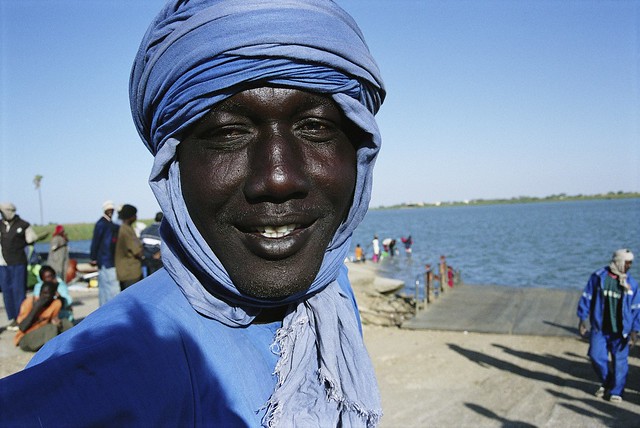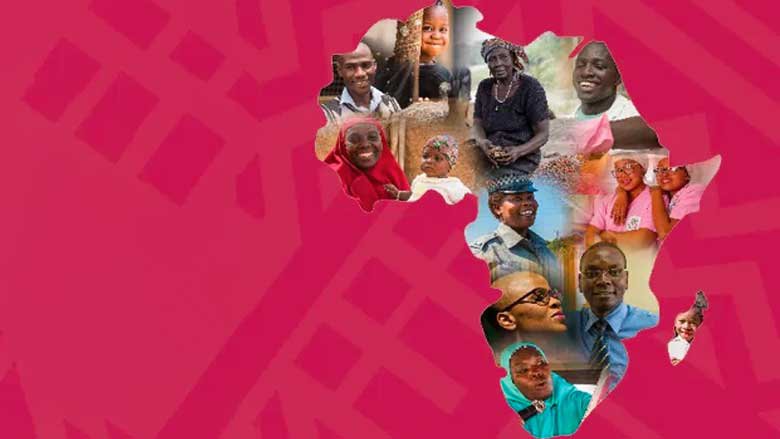The Democratic Republic of Congo (DRC), about the size of Western Europe, is the largest country in sub-Saharan Africa (SSA). The DRC is endowed with exceptional natural resources, including minerals such as cobalt and copper, hydroelectric potential, significant arable land, immense biodiversity and the world's second largest rainforest.
Most people, however, have not benefited from this wealth. A long history of conflict, political upheaval, and instability, as well as authoritarian rule, has led to a serious and ongoing humanitarian crisis, which has been exacerbated since November 2021 with the resurgence of M23 activism in the eastern Democratic Republic of Congo. This situation has worsened an already dire humanitarian crisis, with millions of people displaced and hundreds of cases of sexual and gender-based violence. Additionally, there has been forced displacement of populations. The country has been mired in this cycle of violence and instability since the end of the Congo wars in 2003.
DRC is among the five poorest nations in the world. An estimated 73.5% of Congolese people lived on less than $2.15 a day in 2024. About one in six people living in extreme poverty in SSA live in the DRC.
Political context
In December 2023, the DRC held general elections that resulted in the re-election of F¨¦lix Tshisekedi for a second five-year term. His inauguration took place on January 20, 2024. Tshisekedi's party and its allies won a majority of seats in parliament, consolidating their political power.
On April 1, 2024, Judith Sumwina Tuluka was appointed the first female Prime Minister after long negotiations. Her arrival in government was a significant step forward for women's representation in the upper echelons of the state. A new government was formed in May 2024, with high expectations for reform and governance.
The resurgence of the M23 rebel group over the last few months has significantly hampered the DRC's trajectory towards achieving peace and development. Currently, nearly 20% of the country's territory is controlled by the rebels following the fall of major cities and territories in the North and South Kivu provinces. This has effectively split the country into two blocs, raising further uncertainties as the rebels continue to progress, aiming to control more provinces. The security situation in Ituri is equally unstable, with inter-community conflicts and armed groups fighting over control of mineral resources and territories.
Despite these challenges, the government is seeking to strengthen the presence and credibility of the state, improve governance, and push ahead with structural reforms to restore and maintain stability and peace, attract investment, and create jobs.
Economic Situation
The economy continues to show resilience, growing by 6.5% in 2024, down from 8.6% in 2023. This growth is mainly driven by the extractive industry which increased by 12.8%. Non-mining sectors grew by 3.2% in 2024, supported by construction and services. The current account deficit (CAD) narrowed to 3.4% of GDP in 2024, due to increased mining exports. Foreign direct investment (FDI) and external financing boosted foreign reserves to 2.5 months of imports at end-2024 (from two months in 2023), limiting exchange rate fluctuations. The CDF depreciated by 8.7% at the end of 2024 (down from 17.9% in 2023), leading to a drop in inflation to 11.3% by year-end.
GDP growth is expected to slow to 5.1% in 2025 and moderate to 5.5% in 2027, as expansion in mining production decelerates. Non-mining sectors will gradually support growth, reaching 5.9% by 2027 (from 3.8 in 2025), driven by construction and infrastructure. The CAD is expected to widen to 3.7% of GDP in 2025 amid ¶Ù¸é°ä¡¯²õ temporary cobalt export ban but will narrow to 2.7% of GDP by 2027 with rising copper export earnings.
A strong external position and absence of BCC¡¯s financing of the budget deficit will support a stable currency and contain inflation to the medium-term target of 7%. However, risks are titled to the downside, with continued escalation of the conflict in the east, persistent health outbreaks (mpox), and global conflicts, further straining public spending. Addressing challenges in DRC requires significant national and international engagement to strengthen governance structures, bolster conflict resolution mechanisms, and restore security and state authority.
Social Context
DRC ranks 164 out of 174 countries on the 2020 Human Capital Index, reflecting decades of conflict and fragility, and constraining development. ¶Ù¸é°ä¡¯²õ Human Capital Index is 0.37 which is below the SSA average of 0.4. This means that a Congolese child born today can expect to achieve only 37% of their potential, compared to what would have been possible if they had benefited from a full, quality schooling experience and optimal health conditions. The main contributors to the low score are low child survival rates under age five, high child stunting, and low quality of education.
DRC has one of the highest stunting rates in SSA (42% of children under age five), and malnutrition is the underlying cause of almost half of the deaths of children under the age of five. Unlike other African countries, the prevalence of stunting in the DRC has not decreased over the past 20 years. Due to the very high fertility rate, the number of stunted children has increased by 1.5 million.
The DRC is home to a diverse array of indigenous peoples (IPs) who have faced a range of challenges, including forced displacement from their ancestral lands, discrimination, and lack of access to basic services such as healthcare and education. Despite these challenges, IPs in the DRC continue to play an important role in preserving the country's cultural diversity and promoting sustainable resource management practices. While efforts are being made to recognize and protect the rights of IPs, much more needs to be done to ensure their full participation in society and the protection of their traditional ways of life.
Access to education
Overall, the number of children enrolled in primary education has risen significantly, from 11.9 million (10.7 million in public schools) in 2010-2011 to 16.1 million (14.2 million in public schools) in 2018-2019, and reaching 21.3 million (18.7 million in public schools) in 2023-2024. During the same period, enrolment in secondary education doubled from 2.3 million to 6 million and then increased to 7.5 million.
Despite significant achievements, the education sector continues to face challenges in access, equity, and quality, especially for girls and children with modest backgrounds. While gender inequalities in pre-primary and primary education have declined over time, girls are still less likely than boys to attend and complete secondary education.
The expansion of the education sector is taking place in an environment characterized by internal inefficiencies and low learning outcomes. A learning crisis at foundational levels, exacerbated by the rapid expansion of primary education, continues into secondary education. This situation, coupled with a young, under-skilled workforce, poses risks to the future productivity of the Congolese economy.
Congolese women face significant barriers to economic opportunities and empowerment, including high rates of gender-based violence (GBV) and discrimination. Only 16.8% of women have completed secondary school¡ªabout half of the rate of completion for men. Early marriage and high fertility rates represent a challenge, where women and girls without any education have a fertility rate twice that of women who complete secondary school (7.4 children compared to 2.9 [DHS 2014]). Half of women report having experienced physical violence, and almost a third have experienced sexual violence, most commonly at the hands of an intimate partner (DHS 2013).
Women¡¯s labor force participation rate in the DRC is estimated at almost 62%, most of whom work in agriculture. While participation is relatively high, women earn considerably less than men and own fewer assets. A 2021 DRC Gender Diagnostic Report identifies three major factors contributing to persistent and significant gender gaps: control over land, voice and agency, and risk and uncertainty including vulnerability to shocks and GBV.
¶Ù¸é°ä¡¯²õ health care systems have been greatly impacted by its own protracted conflict, as well as by the continued long-standing complex humanitarian crises in the world. This has been greatly exacerbated by the COVID-19 pandemic and by recurrent disease outbreaks such as cholera, measles, and Ebola. Fragility, conflict, violence (FCV), weak surveillance systems, limited Water and Sanitation Hygiene (WASH) infrastructure, poor access to water and limited laboratory networks across the country create challenges to rapidly identifying and containing outbreaks. The increase in the prevalence of non-communicable diseases (NCDs) poses a big risk in the context of DRC, given its weak health system and poor coordination between sectors. Per the World Health Organization, the number of deaths from NCDs in Africa is projected to exceed that from communicable diseases and perinatal deaths combined by 2030, which would prove to be catastrophic for the DRC.
Last Updated: Apr 09, 2025







